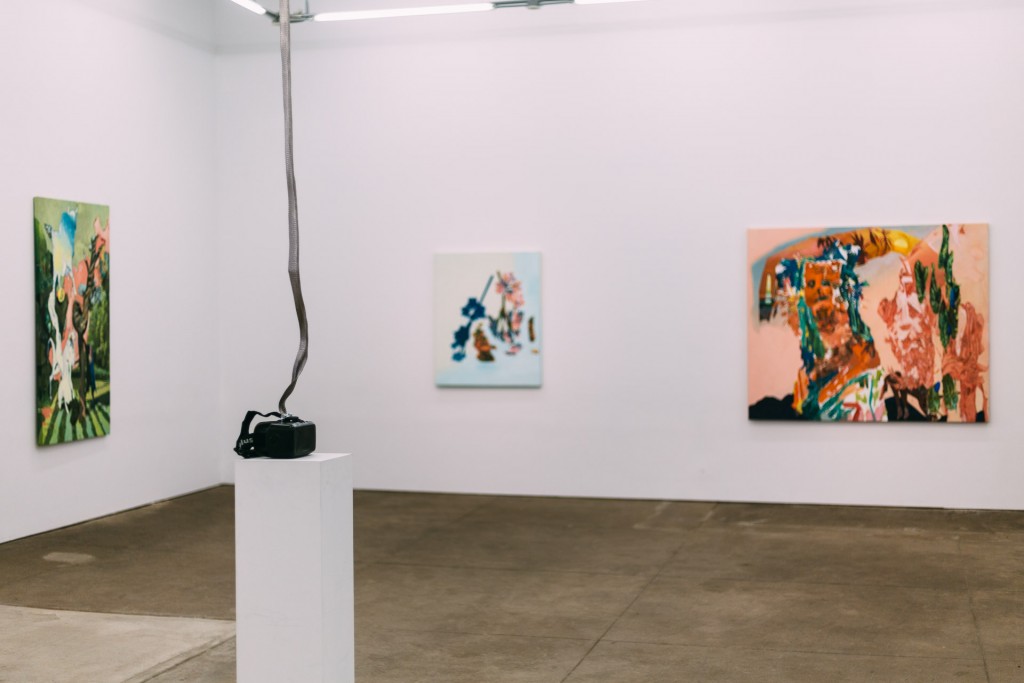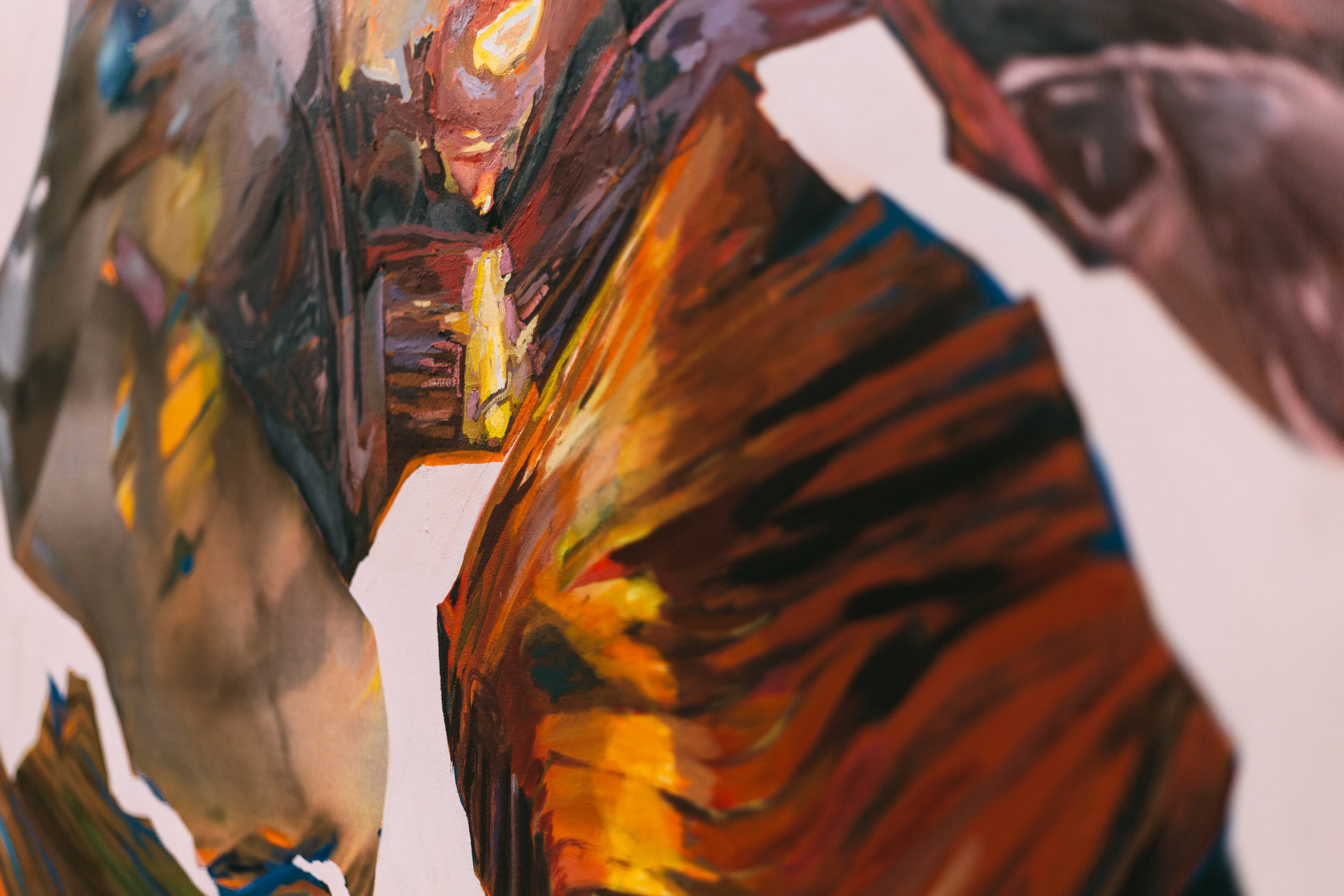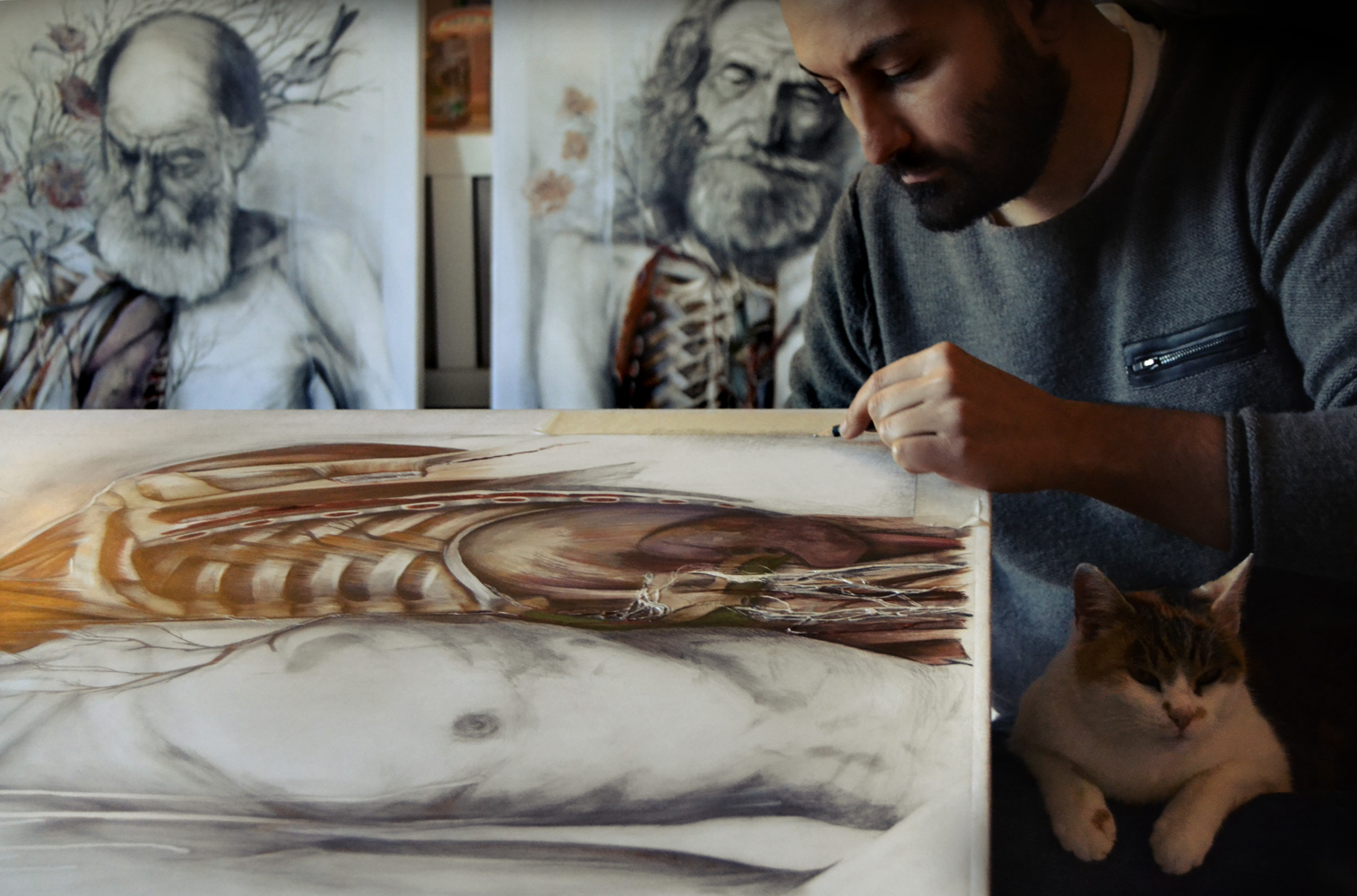
Virtual reality has been a contested idea since the initial digitization of society. Techno-revolutionaries, and neo–luddites find both reason and doubt in its future as influences melt into the relevant shifts of our realities.
One such space being influenced is the arts, and Rachel Rossin is a protagonist in the conversation. Her latest show, “Lossy”, on display at Zieher, Smith and Horton, will surely live as a notable example of contemporary society’s dance with a curiosity for the novel, and a nostalgia for the traditional. For those of you less digitally inclined readers, the term “lossy” refers to a data compression technique where unnecessary information is eliminated, often resulting in data loss or visual distortion.
Rossin, a Virtual Reality Fellow in residence at New INC, was traditionally educated in the fine arts, but has also been a self-taught programmer since the ripe age of 8. She has since been exploring the juncture between technology and art, developing rich virtual reality landscapes and translating them into paintings.
The show is set in the traditional “white box” of the gallery space, and composed of nine canvas paintings, and two VR headsets. With no particular order, visitors are invited to experience both mediums for themselves.

It proves nearly impossible to contain one’s subtle eagerness to put on the bulky Oculus goggles, running on a 2 ½ minute loop. Sci-fi connoisseurs and passive onlookers will find common ground in acknowledging the immersive, unique, and almost whimsical experience Rossin creates. Though she retains authorship over the journey, one feels deeply involved as objects flood around and through you. I recommend looking down and discovering your body nowhere to be found.
Both her canvases and VR productions represent a constant symbiotic and reciprocative conversation; as forms and objects melt into the opposing medium. Colors are repeated, shapes are re-appropriated, and if one pays close enough attention, exact iconographies can be matched.
Her deeply singular artistic method of digitally sketching her work, imposing gravity, and thus playing with the effects, makes for an absolutely unique form of creative expression. She tackles traditional still-life and portraiture representations by layering various practices of digital art, thus making for a rich visual experience. “Lossy” brilliantly embraces a shift in the perception of art, while catering a cross-generational enticement.






Lossy will be on view until November 14th at Zieher, Smith and Horton in Chelsea.
Like this article? Check out the animated paintings of Federico Solmi, and other artists that meld the worlds of technology and art.








